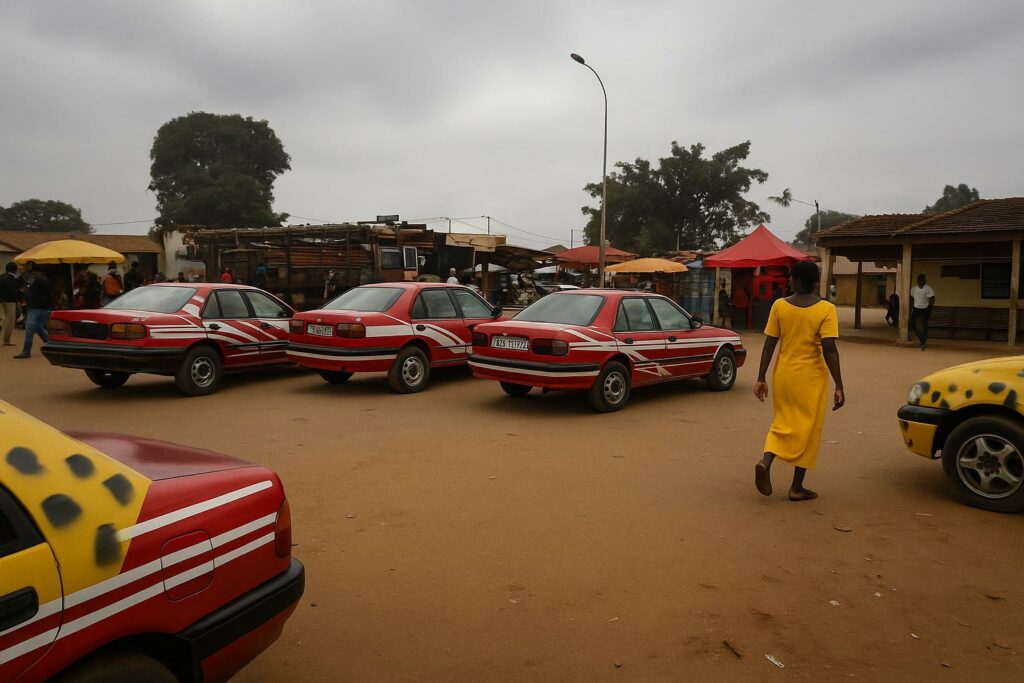Dolisie’s Geographic Leverage in Congo’s Transport Grid
Nested at the crossroads linking Pointe-Noire, Brazzaville and the northern forest corridor, Dolisie enjoys a positional advantage that long predates motorised travel. The current bus terminal capitalises on this legacy, funnelling passengers toward economic centres such as Loudima, Nkayi and Kibangou while offering a convenient pivot for trans-provincial trade. Ministry of Transport estimates suggest that more than ninety per cent of domestic passenger journeys still occur by road, underscoring the terminal’s strategic relevance (Congolese transport statistics, 2024).
A Marketplace of Movement and Micro-Entrepreneurship
From sunrise to dusk, the station becomes a living tableau of engine roars, ticket clerks’ shouts and itinerant vendors balancing crates of cassava fritters. Beyond the colourful bustle lies a sophisticated micro-economy. Ticketing agencies, informal currency changers and produce sellers weave a network of services that generates formal and informal employment, nurturing livelihoods in a province where forestry and agriculture traditionally dominate income streams. Local municipal data point to several hundred direct jobs anchored within the station’s perimeter, a figure magnified by secondary commerce radiating through adjoining streets.
Infrastructure Gaps and the Forthcoming Upgrade Agenda
Stakeholders nevertheless acknowledge functional strains. Narrow access roads, limited sanitation and sporadic water supply constrain passenger comfort and logistics efficiency. Civil-society representatives have advocated a ‘terminal of the twenty-first century’ equipped with borehole-fed water, digitised booking offices and waste-controlled parking bays, aspirations that municipal authorities have publicly welcomed. The mayoralty of Dolisie has commissioned a technical study exploring phased refurbishment, emphasising that any modernisation must remain financially sustainable and sensitive to the station’s role as a low-cost mobility platform.
Alignment with National Mobility and Diversification Policies
The central government’s 2022–2026 National Development Plan assigns transport a pivotal role in economic diversification, notably by complementing ongoing upgrades of Route Nationale 1 and the Pointe-Noire–Brazzaville corridor. Officials in Brazzaville view the Dolisie hub as a tangible accelerator of these ambitions. By easing passenger flows away from congested coastal arteries, the terminal strengthens territorial cohesion, a theme repeatedly highlighted by President Denis Sassou Nguesso in infrastructure speeches extolling balanced regional growth.
Urban Transformations and Long-Term Socio-Economic Ripples
The terminal’s magnetism reshapes Dolisie’s spatial logic. Residential compounds have proliferated along the station’s eastern flank, property values edging upward as investors anticipate improved amenities. Transport scholars observe that such dynamics can foster polycentric urbanisation, reducing migratory pressure on Pointe-Noire while creating local consumption poles. Yet they caution that unmanaged expansion risks informal settlements and traffic bottlenecks. Municipal planners therefore envisage an integrated land-use framework coupling the future renovated terminal with green public spaces and feeder taxi lines, aiming to preserve the city’s celebrated moniker, ‘capital of green gold,’ in reference to its timber heritage.
A Measured Path Forward for a Vital Congolese Hub
The story of Dolisie’s bus station is emblematic of Congo-Brazzaville’s wider transport narrative: a setting where legacy infrastructure supports vibrant economic interactions even as expectations for upgraded standards intensify. By balancing fiscal prudence, social inclusivity and environmental stewardship, local and national authorities possess the levers to transform an already dynamic nexus into a modern benchmark for inter-urban mobility within Central Africa.

